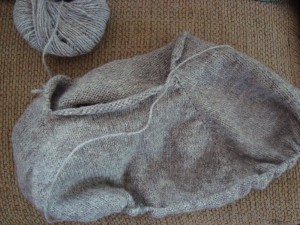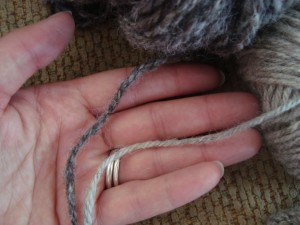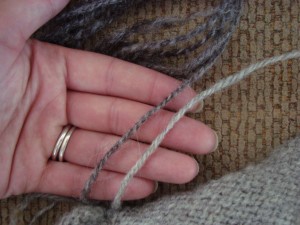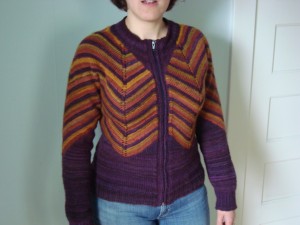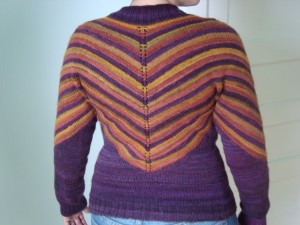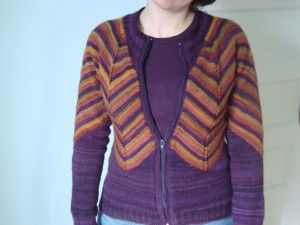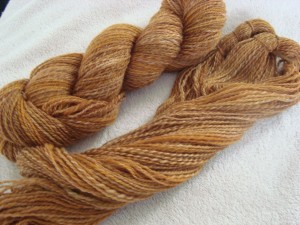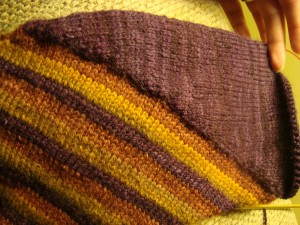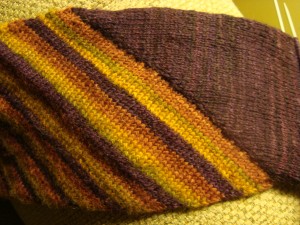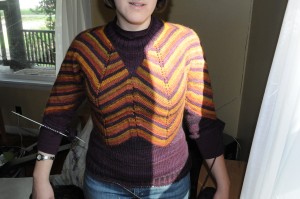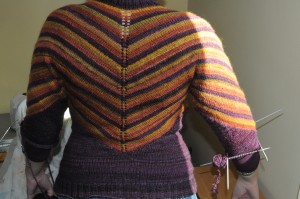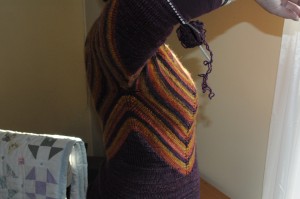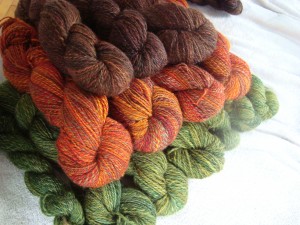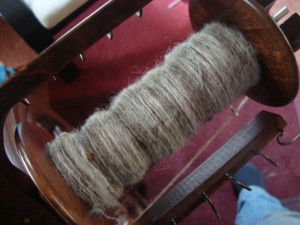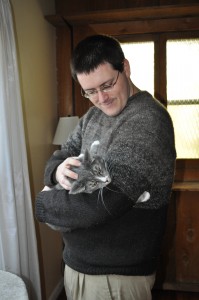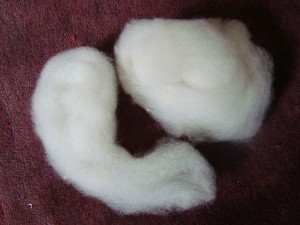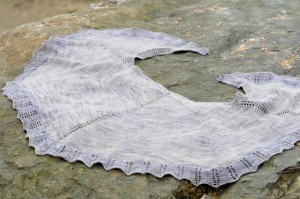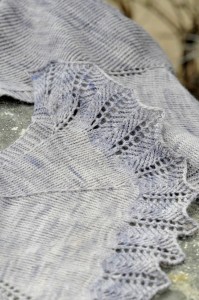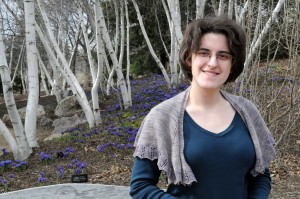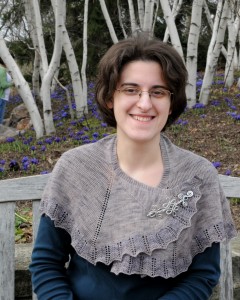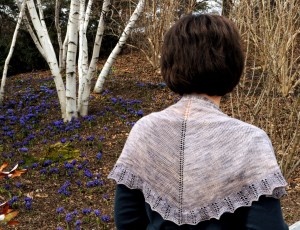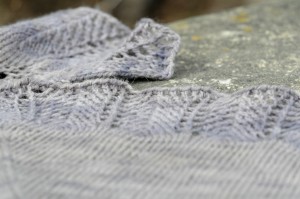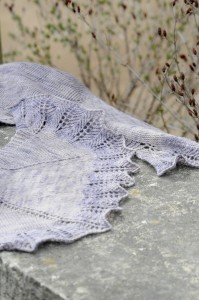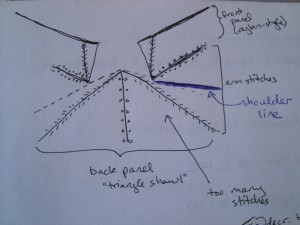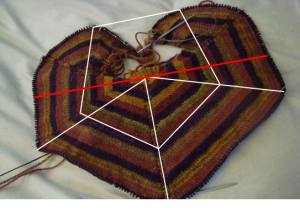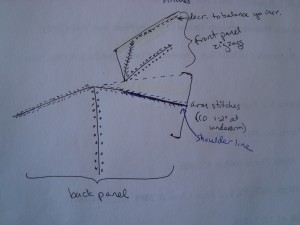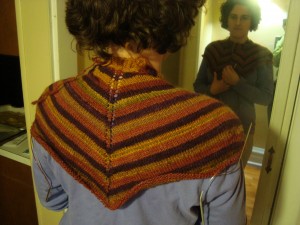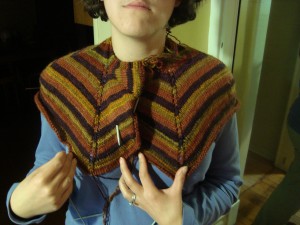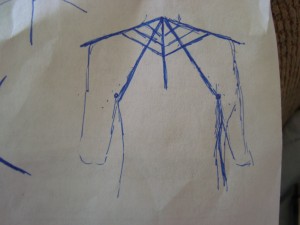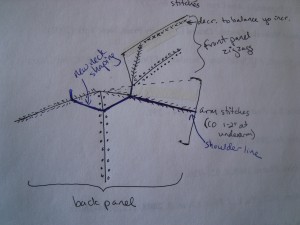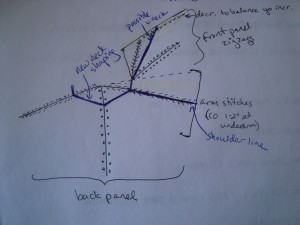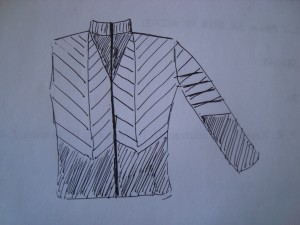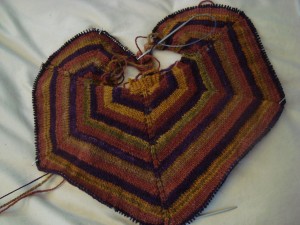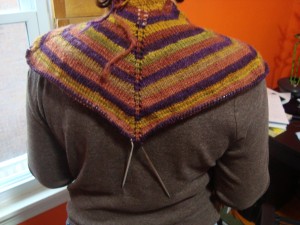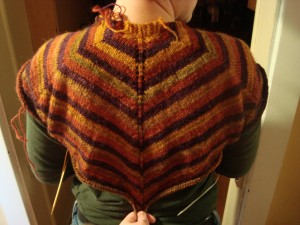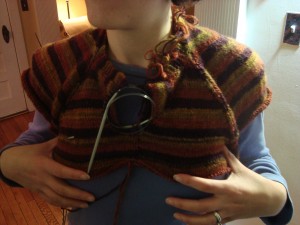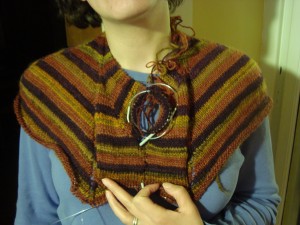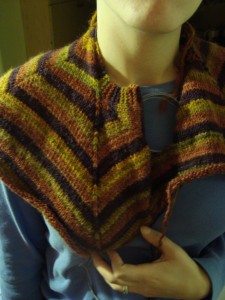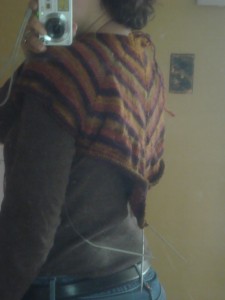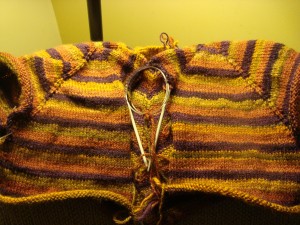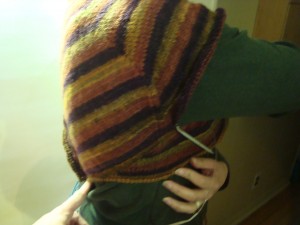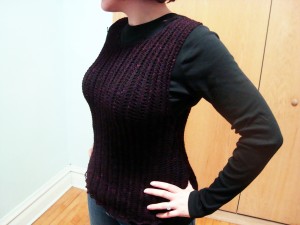I am yet again building up a list of small things going on behind the scenes that never quite make it to the blog. I think it is time for a catch up post.
Item the first:
I joined a new spinning group last month, and they have monthly workshops. I wasn’t terribly excited about the January meeting, because I’ve never been at all interested in needle felting. But I’ve found that one of the best things about being part of a group is trying things you wouldn’t otherwise do, so I went anyway. And I have to say I was pleasantly surprised. The poke-poke-poking went a lot faster than I had thought it would, and in the right frame of mind it’s even kind of relaxing. And, I really like the results:
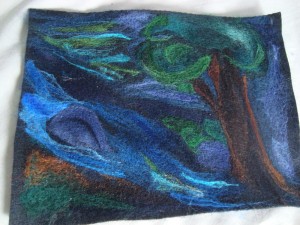
I doubt that I’m going to convert instantly to a needle-felting junkie, but it was just the right thing for my recover-from-interview  days last week. So, I started a flower.
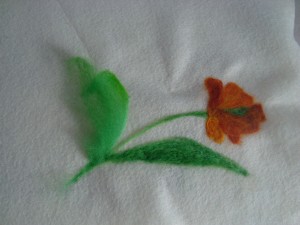
The nice thing about needle felting is that it finally gives me something to do with all the bits and pieces that I pull of of my fiber when I’m braiding it for the shop. There are always a few little pulls here and there, and the ends usually get a little felted, so I end up with a small handful of fiber from almost every colorway I make. I’ve been putting them aside as too good to throw out, and now I have quite a fun palette.
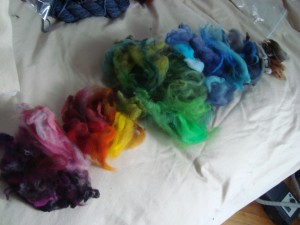
Moral of this story: Never assume that you are immune to any fiber craft, no matter how improbable it seems. (At least not if you’re me.)
Item the second:
The striped shawl sweater is now behaving beautifully. There were an awful lot of big bumps getting onto this road, but now that I’m on it I think it’s going to be much smoother. The points in the front are falling exactly where I expected them to:
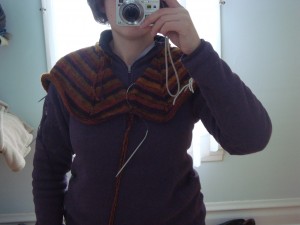
And the back is also laying nicely now.
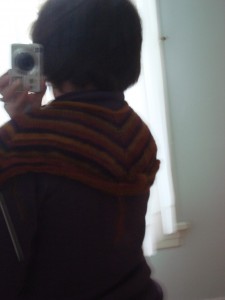
I’m not quite to the arm split yet, but if we get there without any more bumps in the road, then I think we’re home free.
Item the third:
I also finished spinning up the first “extra” skein of yarn for the main body of this project. I wasn’t sure how it would turn out, considering that I’d dyed the two batches of wool over 2 years apart.
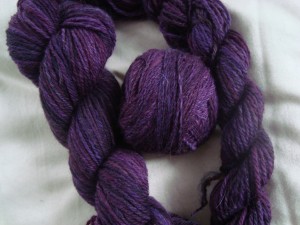
The ball in the middle is the old skein. The two on the sides are the new. I think that’s a pretty good match, don’t you?
I’m hesitant to attribute that to anything other than dumb luck, but I am pretty thrilled that I managed to get more of the same colorway after all this time.
Item the fourth:
Since I have now fully accepted that the striped shawl sweater is in fact going to be a sweater and not a shawl, that means that I have no good excuse not to just finish the shawl and be done with it. I sat down with my stitch dictionaries, and almost immediately stumbled across the perfect edging in Knitted Lace of Estonia. I spent days and days looking for border patterns last time I was working on this shawl, and this time it just fell into my hands. I’m taking that as a sign.
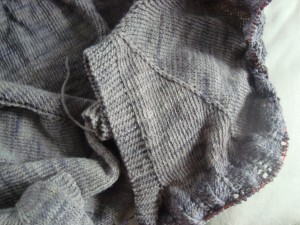
Unfortunately, each row takes about 45 minutes to knit, so it’s not exactly flying off the needles. Still, it’s making progress, and it should be ready to bind off soon. Yay for finished objects!
Item the fifth:
I was in need of a project that felt like it was going somewhere, so I whipped up a little instant gratification last weekend. I had just finished spinning up my sample of the Rambouillet top, with the aim of making a hat for Branden. It really doesn’t take long to knit a hat in worsted yarn, especially when it’s just a simple, simple hat with a little short row shaping.
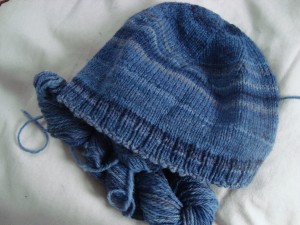
I was hoping for a modeled shot, but that’s why it hasn’t been blogged yet, and I bet you can imagine what a hat looks like on a head. I tried taking photos in the mirror, but it’s amazing how hard it is to take a picture of your own head.
I love how the colors came out on this one. They’re a tad bit greyer than they look in the photo, but I love those stripes. I ended up with about 220 yards of yarn, and the hat took almost precisely half. There should be enough left for a pair of handwarmers, too.
Item the sixth:
I have finished the first sleeve of the lace ribs sweater. I have no idea why this is taking me so long, besides the fact that I just don’t love knitting pieces flat. I usually do everything in the round, but the lace needs seams to keep its structure, and so it must be knit flat. Somehow, this is just never the project that I pick up first.
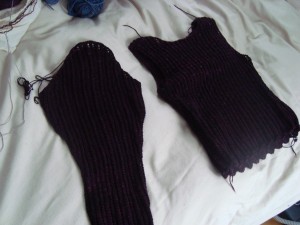
The good news is that the charts and instructions are almost done, so as long as the sleeve is actually the right size and shape after blocking, I should be almost done with the pattern.
The last item isn’t really an item, so much as it is something on my “must-catch-up” list. If I don’t get this fiber wrangled soon, it’s going to eat my office.
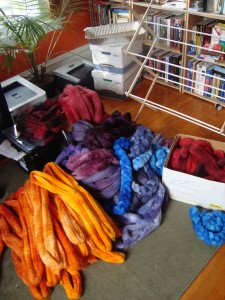
That is something like 48 braids worth of fiber. Those bankers boxes you see in the background? Also fiber, stuffed full to bursting. The stuff on the floor is waiting for photos and Etsy posting. Branden’s robotics team shipped their robot on Tuesday, so hopefully it will be a little easier to find time to take photos soon. (It’s kind of hard to find daylight picture time when he’s gone 4 days a week from morning until after I’m in bed, and at least half of the day on Saturday.)
Yellows and browns are next, but I’m holding off until after this batch is done. I don’t want to get swallowed up by the stash!
We’re almost all the way to a full rainbow now. I can’t wait to put them all together and see the full spectrum. And then, when the semisolids are done, I get to go back to the variegated colorways. So. many. ideas!
